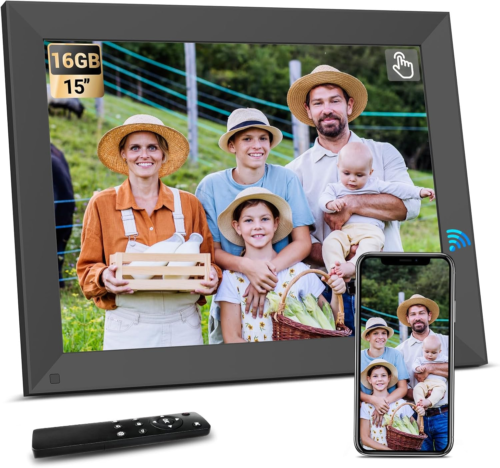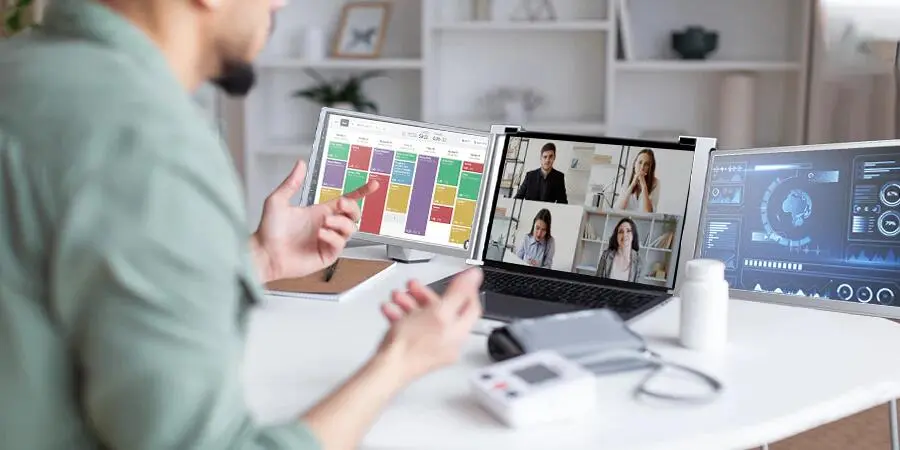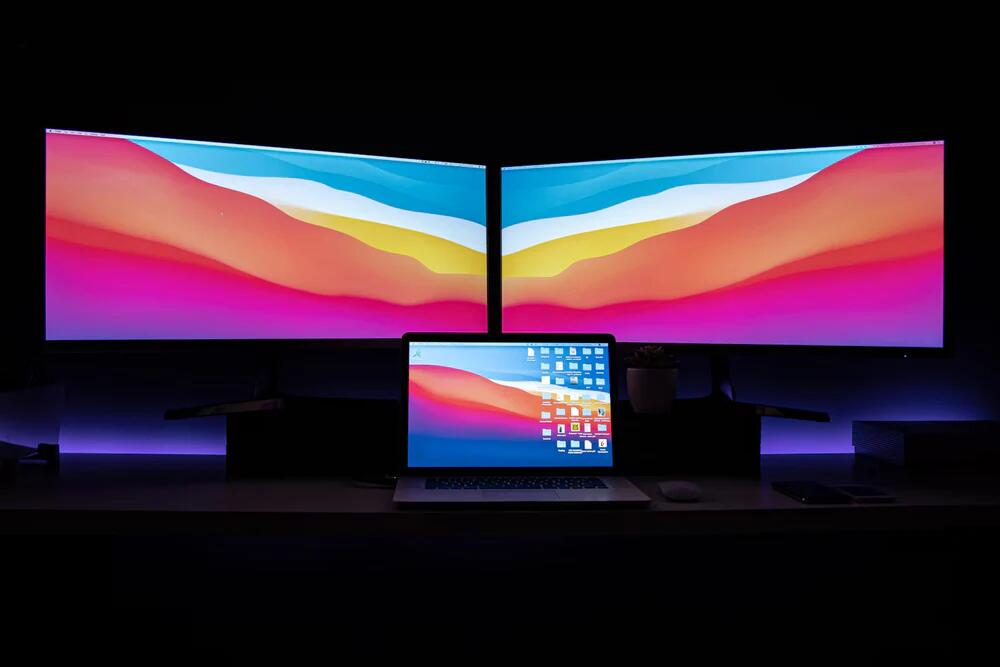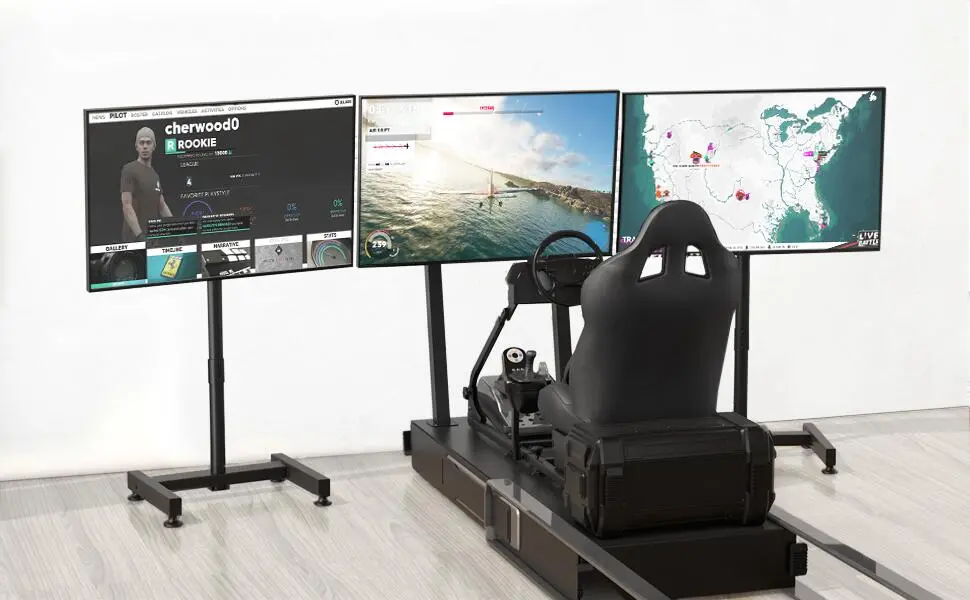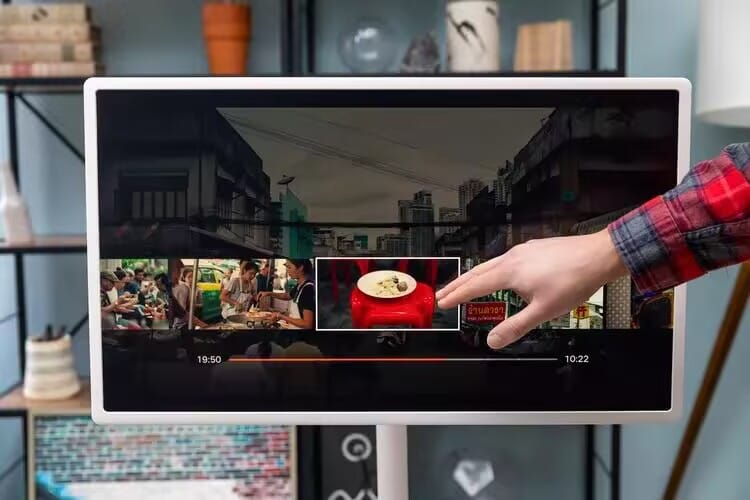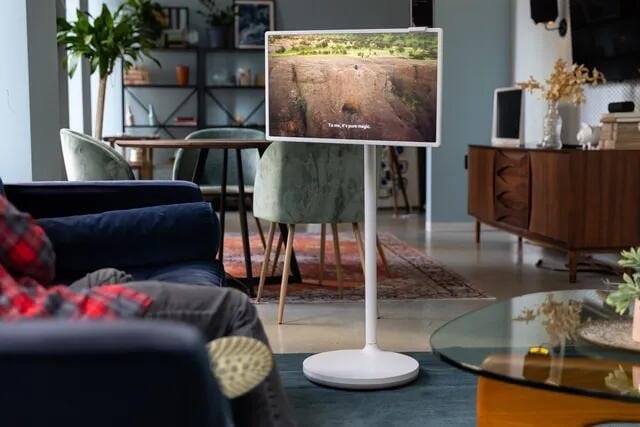
Traditional photo frames capture moments in time, while digital photo frames are like a flowing museum of memories. This device, which blends electronic display technology with home aesthetics, is quietly changing the way people showcase their memories. Whether it’s a cozy corner in the living room or personalized decor in an office, digital photo frames allow every photo to become an entryway to a story with dynamic slideshows, high-definition displays, and smart connectivity. This article will delve into the technical principles, core components, functionalities, and buying tips for digital photo frames, helping you understand how this tech product is reshaping our living spaces.
Table of contents
- Definition and Core Functions of Digital Photo Frames
- Core Technology Analysis: Evolution of Display, Interaction, and Connectivity
- Classification and Evolution of Features: From Basic to Smart Ecosystem
- Buying Guide: How to Choose the Right Digital Photo Frame?
- Market Trends and Future Directions
- The Essence of Digital Photo Frames
Definition and Core Functions of Digital Photo Frames
A digital photo frame is an electronic display device that uses an LCD or LED screen to showcase digital photos, videos, and other multimedia content, supporting slideshow looping, multi-format compatibility, and smart connectivity. Compared to traditional frames, its core advantages include:
- Dynamic Display: Supports customizable slideshow transitions and intervals, breaking the monotony of static images.
- Flexible Updates: No need to print photos; new content can be uploaded in real-time via USB, memory card, Wi-Fi, or a dedicated app.
- Space Optimization: Can store hundreds of photos in a single frame, saving physical space and adapting to modern minimalist home decor.
- Multimedia Expansion: Some models support video playback, music synchronization, calendar/clock displays, and even touch interaction (like the Philips SPF5208 with its touch-frame design).
Technical Essence: A digital photo frame is essentially a mini-computer system composed of a processor, memory, and display screen. The processor handles image decoding and system control, the memory (internal or external) stores the content, and the display (LCD/LED/OLED) shows the visual output. The typical workflow is: the user uploads content → the device decodes and processes it → the content is displayed according to preset rules (e.g., Ceiva photo frame automatically downloads cloud updates via a phone line).
Core Technology Analysis: Evolution of Display, Interaction, and Connectivity
- Display Technology: The Core Competitiveness of Picture Quality
- LCD vs. LED:
- LCD (Liquid Crystal Display) uses fluorescent backlighting, which is cheaper but consumes more power and has limited color contrast.
- LED (Light Emitting Diode) backlighting is thinner, more energy-efficient, and offers higher brightness and color saturation (e.g., Philips Imagen Pro technology optimizes skin tones and contrast). Higher-end models often use LED or IPS screens for better viewing angles and picture quality.
- Resolution and Size:
- Common sizes range from 7 to 15 inches, with resolutions from 480×234 (analog) to 1920×1080 (digital). The 4:3 ratio is ideal for traditional photos, while the 16:10 ratio is better for widescreen content. Be mindful of potential distortion when scaling.
- LCD vs. LED:
- Interaction and Connectivity: From Local to Cloud Ecosystem
- Storage and Input:
- Supports external devices like SD cards, USB, HDMI, and some models have built-in storage (e.g., Philips 512MB memory).
- Smart Connectivity:
- Wi-Fi/Bluetooth connections allow direct pairing with smartphones (e.g., My First Frame’s Circle app), cloud synchronization (e.g., Ceiva’s daily automatic downloads), and even AI image optimization (automatically adjusting colors and removing red-eye).
- Operating System:
- Embedded systems (e.g., PSOS) ensure low-power operation with simple user interfaces, either touch or physical buttons for different user preferences.
- Storage and Input:
- Additional Technologies: Enhancements for a Better Experience
- Environment Adaptation:
- Automatic brightness adjustment (Smart Power Pro sensor), anti-glare screens (e.g., My First Frame’s matte screen).
- Eco-Friendly Design:
- Low-power modes and recyclable materials (e.g., Philips’ energy-saving mode reduces 1/3 of energy consumption).
- Multimedia Integration:
- Music playback (MP3), video decoding (MP4), animated clocks, and even e-book browsing (in higher-end models).
- Environment Adaptation:
Classification and Evolution of Features: From Basic to Smart Ecosystem
- Basic Models (Simple Functions)
- Core: Only supports JPG photo display, no connectivity.
- Use Case: Ideal for budget-conscious users with simple needs (e.g., 1.5-inch portable models, storing about 70 photos).
- Multimedia Models (Advanced Features)
- Core: Supports photo + music/video playback, with local storage expansion.
- Examples: 7-inch digital screen models, compatible with SD cards (32MB-4GB), supporting slideshow transitions.
- Smart Models (Cloud Connectivity)
- Core: Wi-Fi/Bluetooth connectivity, app control, and cloud synchronization (e.g., My First Frame Live).
- Features: Remote sharing (cloud photo frame), remote management (family members can upload photos via the app), social media integration (automatic fetching from Instagram/Twitter).
- High-End Custom Models
- Core: Flagship features and design aesthetics, such as Philips’ RadiantColor technology (extends edge color on small-size photos), flicker-free static display.
- Extra Features: Instant printing (photo frame printer), multi-screen integration (smart home ecosystem).
Buying Guide: How to Choose the Right Digital Photo Frame?
- Priority Core Parameters
- Screen: Resolution (≥800×480), type (LED preferred), anti-glare (matte screen).
- Connectivity: Wi-Fi (essential), app support (ease of use), external storage (USB/SD card).
- Storage: Internal + external expansion, recommend at least 64GB (about 2,000 high-definition photos).
- Scene Adaptation
- Home: 8-10 inches, 4:3 ratio, automatic on/off (for energy savings).
- Office/Gift: Aesthetic design (wooden frame), supports multi-user management (team sharing).
- Portable: ≤5 inches, battery life (3-5 hours), lightweight design (e.g., VideoChip Wallet).
- Brand and Added Value
- Reliability: International brands (Philips, Kodak) offer image optimization technologies (Imagen Pro), durability (metal/wooden frames).
- Ecosystem Services: Free cloud storage (first-year free with some brands), exclusive app features (filters, collage templates).
- Pitfalls to Avoid
- Screen Grade: Choose AA screens (no bright or dead pixels), avoid B/C screens (industrial defects).
- Resolution Matching: Ensure uploaded photo resolution is greater than or equal to the screen resolution to avoid blurriness (e.g., a 7-inch screen recommends at least 1200×900 pixels).
- Privacy & Security: Choose cloud services with encrypted transmission to avoid data breaches.
Market Trends and Future Directions
- Technological Innovations
- Display Upgrades: OLED screens (self-lighting, higher contrast), electronic paper (eye-friendly, paper-like, such as E Ink frames).
- AI Empowerment: Face recognition (automatically categorizing family members), scene recognition (switching themes for trips/holidays).
- Interactive Evolution: Voice control (compatible with Alexa/Google Home), gesture sensing (air-swiping to change images).
- Scene Expansion
- Emotional Connections: Real-time sharing for families in different locations (cloud photo frame + instant push notifications).
- Commercial Applications: Retail displays (dynamic advertising), hotel services (welcome screens + local guides).
- Sustainability
- Eco-Friendly Design: Low-power chips, recyclable materials (e.g., bamboo frames), Energy Star certifications.
The Essence of Digital Photo Frames—A Symbiosis of Technology and Emotion
Digital photo frames are not just hardware; they are carriers of emotion. They weave scattered photos into stories, allowing memories to continue to radiate warmth through dynamic displays. From basic slideshow playback to seamless smart ecosystem connectivity, technological advancements always center on the question of “how to better convey emotions.” In the future, as AI and display technology converge, digital photo frames may become the emotional hub of smart homes, connecting every precious moment from the past, present, and future.


